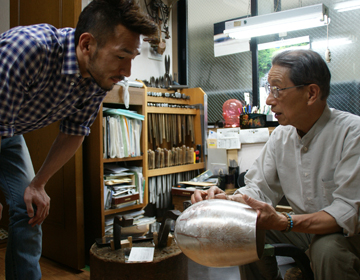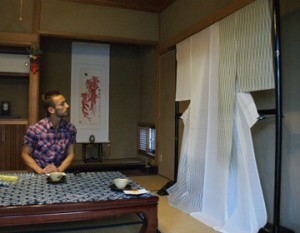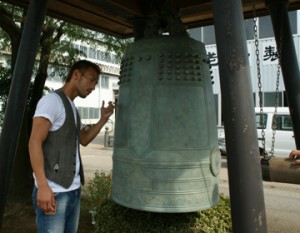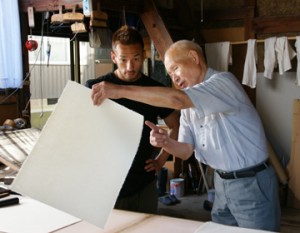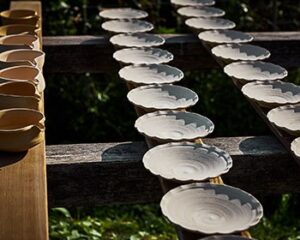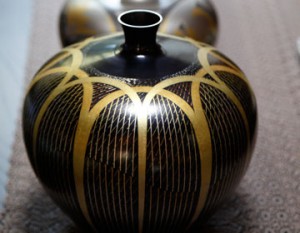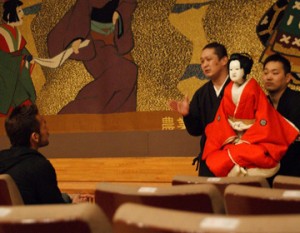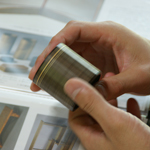Mastering a skill in one generation
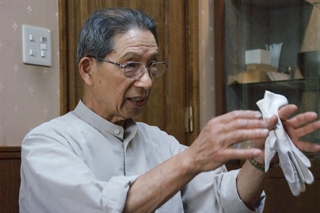
At 15, Hoseki Okuyama left his home in Shinjo, Yamagata to head for Tokyo. It has been around 60 years since then. He has committed himself to the world of silversmith, and in 1995 was designated an Important Intangible Cultural Treasure.
”To be honest, I first came to Tokyo because I was interested in the entertainment business. But I had to make a living. So, I decided to become an apprentice to a silverware artisan.”
He wanted to quit his job at 20, but the proverb, ”mastering a skill takes one generation” came to mind. He realized then that he had to use the rest of his life to master the skills he had learned. He prospered as a craftsman for dozens of years, but at 40, he studied under Mitsuteru Tanaka to become an artist. ”How can a person who has only graduated middle school make a note in history? I figured, the only way was to leave behind his creations.” He started off rather late as an artist, but there is no question his years of experience in creating practical objects provided the foundation for Hoseki Okuyama, the artist.
Expressing the abundance of nature
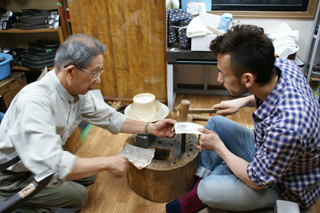
The 2 techniques Okuyama excels in are ”kiribame” and ”uchikomi” methods of hammering a design onto metal and then fitting metal parts into the design.
With ”kiribame”, you copy a blueprint of the design onto a thinly pressed gold copper sheet. The design is cut out with a jigsaw, and holes are made in the same places on the vessel for it to fit. After fixing the design onto the vessel, it is heated to make it stick together, and then hammered. With the ”uchikomi” method, the design is bonded onto the surface of the vessel, then pounded to make indentations.
”Kiribame” is well suited for larger patterns, while ”uchikomi” is more suitable for delicate designs.
The 2 techniques are used in Mr Okuyama’s work to express abundant designs of nature. It is hard to believe that these metal drawings with sensitive details are created by hammering. The designs are of delicate branches, leaves, and bold, powerful flowers. The entire process is difficult beyond imagination. Nakata tried hammering a picture of a tree onto a postcard-size silver sheet, but he found that it required patience and was very time consuming.
The large work of art that was donated to Ise Shrine had more than 12,000 cherry blossom petals. The ”uchikomi” hammering method was used to hammer each and every petal on the design.
Okuyama’s persistent effort brings out the beauty of nature in his work.
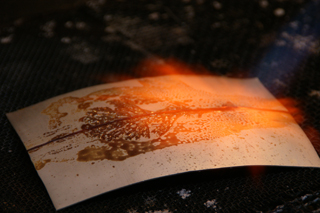
Effort Pays off
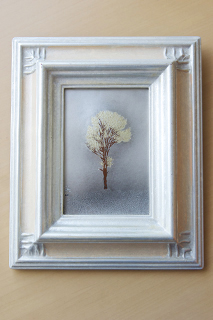
Okuyama says that he has never been satisfied with any of his work.
”I’ve found some of my pieces to be acceptable,” he laughed and continued. ”During the process, it’s like looking at your own child. You start to notice the flaws. I tend to pick out the spots where I had difficulty. So, I have never been completely satisfied with any of my work.”
During our conversation, we noticed a lot of ”shodo” works. They were all written by Okuyama. He started calligraphy 16 years ago. He talked about how a teacher told him that he should practice on his own, because learning the art would just be a copy of the teacher. One time he wrote the word, ”Fujisan”. There was a reason for this.
”I wrote the word mountain, to remind me of the soul and the Japanese spirit. It was to remind me that I needed to continue my efforts even after being recognized for my work. My soul and Japanese spirit were united, enabling me to be selected as a Living National Treasure.”
He continues to tirelessly put effort in creating his work, even after he was designated Important Intangible National Treasure holder. ”I feel most calm when I am in my studio listening to the radio,” Okuyama laughed.
Nakata’s ”uchikomi” hammered work turned out beautifully with help from Okuyama.



